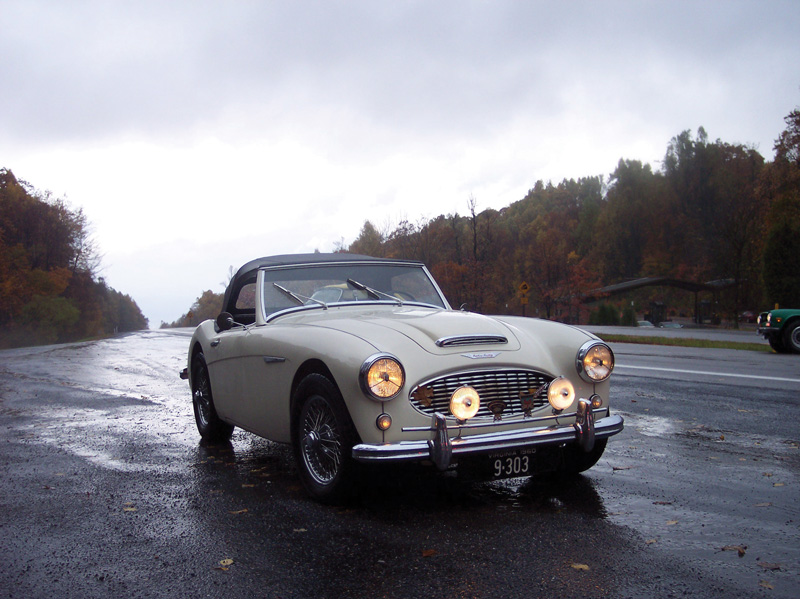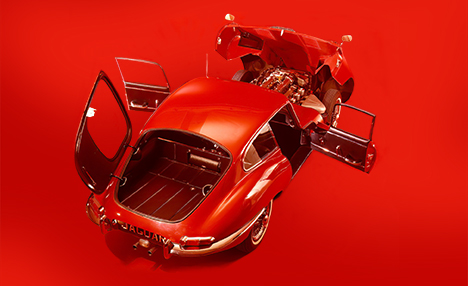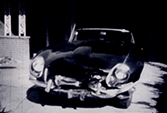Not all Competitions Require the Pedal to the Metal

“Our intent with the Economy Run is to drink upstream from the rest of the car club herd, use dormant driving skills and have fun doing so,” says Peter Philips, Richmond Triumph Register president and ’65 TR4A owner.
Instead of the same old wax-and-shine car show, some clubs are reviving the economy run events that were popular in the past but unheard of in recent times. They require a different skill set since they’re driving events—think shifting and braking rather than cleaning and polishing. Vintage car owners are finding them to be a gas, so to speak.
What’s an economy run? It’s an event designed as a real-world test of fuel-frugal driving techniques and car fuel economy. It’s a competition held within the speed limits. The trophy goes to the driver with the highest miles-per-gallon (mpg) on the mapped course.
Peter Philips, president of the Richmond Triumph Register in Virginia, says an economy run appeals to the sense of competition while getting across the message of economical driving. Plus it showcases British cars to the public—part of the club’s mission—in a fresh format.
Early Economy Run History
Economy runs actually go back to the earliest days of automobiles when there were concerns about the availability of gasoline, especially on long-distance trips. After the Depression and WWII, they evolved into events that celebrated economy and practicality for the thrifty-minded populace. The biggest event, the Mobilgas Economy Run, went on to become one of the most publicized automotive events in the 1950s and ’60s.

The mainstay of the MPG on Route 33 field was Triumph, though the Big Healeys were well represented, albeit thirsty.
The Mobilgas Economy Run started in 1936 with sponsor Gilmore Oil to promote its Red Lion gasoline; the name changed when Mobil purchased Gilmore. The competition originally ran from Los Angeles to Yosemite, and eventually stretched to New York before it ended in 1968. All the major American car companies participated in the event, sanctioned and run by the United States Auto Club (USAC). A separate Mobil Mileage Rally for imports came along in 1960.
This was a fuel-mileage test of regular cars on real roads with typical driving and weather conditions—now the EPA sets fuel mileage by running cars on a chassis dynamometer in a climate-controlled environment. A ton-mileage judging formula (multiplying weight by distance) initially determined the winners in the eight classes, but this method favored heavier cars. In 1959, USAC switched the criteria to actual miles-per-gallon.
The USAC bought new cars from dealerships, certified they were stock, sealed the hoods and chassis, and replaced the factory gas tanks with a special calibrated tank for precise measurement. Car companies tapped staff engineers or professional race car drivers for their teams.

“Aside from the obvious method of slowing down, few club members had any real notion of the tricks used by today’s hyper-miler,” says Philips, adding that drivers caught on quick during the event.
Creative Mileage Enhancements
During the actual competition, each car had a USAC observer in the back seat to ensure all the rules were followed. But there was no one monitoring the car break-in period before the event, and that allowed room for creativity in order to gain a competitive edge. Tricks used to reduce internal and external friction ranged from wearing down the brakes and scrubbing the edges off the tires to running the cars without air filters on desert roads behind another car that kicked up sand.
Peter Philips heard the stories of the Mobilgas Economy Run while growing up—his dad was involved in the event as a carburetor engineer for Chrysler. When the Richmond club got tired of hosting an annual car show, Philips thought an economy run would be a fun alternative.
“You can attend a car show every weekend from May to October in the Mid-Atlantic Region,” says Philips, “and you see basically the same cars at every event. We wanted to find a way to get the cars out on the road that would be easy on the cars and non-threatening to timid drivers.”
A Fun Driving Event
Initially Philips got a lot of blank stares when he brought up the event idea. But once he explained how it worked, club members warmed to the idea of using long-dormant driving skills.
The club’s “MPG on Route 33” event last October was a huge success with 21 cars in seven displacement classes taking the challenge. Entry was open to non-club members too. Cars filled up at one gas station, took Route 33 from Richmond to the mountaintop intersection with the Skyline Drive, then returned and filled up again to compute mpg.
“Of course we’re dealing with odometers manufactured in Great Britain where accuracy wasn’t a priority, but we work with what we’ve got,” says Philips, owner of a 1965 TR4A. He adds that it’s surprising how few people ever check their actual gas consumption.
Economical Driving Skills

Mike Newhart’s patina-rich TR3, long since retired from the compression race, averaged 17 mpg on the 168-mile course, yet no one had more fun than Mike, says Philips.
The 168-mile route incorporated mixed road conditions and terrain, with no known shortcuts. Cars were given four hours to complete the event, but Philips stresses that winning takes more than just driving slow. “You want the engine to work as little as possible, gaining speed going down hills and letting the uphill run eat the speed away. You have to pretend your car is a bicycle,” he explains.
Philips believes one of the best aspects of an economy run is that it levels the playing field between marques, and between cars of varying cosmetic condition. “Some participating cars were concours winners, while others sported red primer and no top,” says Philips, adding that everyone has a shot at winning.
In the final analysis, the MPG on Route 33 Economy Run was safe, the cars ran well, and the day was so much fun the club doesn’t want to wait a full year to run another one, says Philips.
Fuel-Friendly Driving Advice
Austin Elmore, the top economy driver in America in the 1930s who worked for Gilmore Oil, passed along these mileage-efficient driving suggestions:
• Accelerate smoothly
• Maintain a steady speed
• Shift into higher gears whenever possible
• Avoid braking unless necessary
• Always think ahead.
Kathleen M. Mangan








'Economy Run Revival' has no comments
Be the first to comment this post!